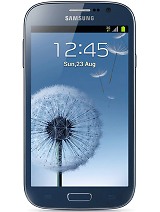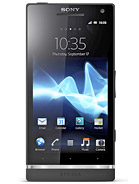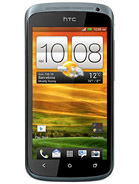Samsung Galaxy S II Plus review: Golden oldie
Golden oldie
Final words
We mentioned at the start that it's the software where the S II Plus will make the most sense over the original Galaxy S II, due in large part to the near-identical hardware of the two devices. However, with Jelly Bean for the Galaxy S II already available in some markets and probably in many more soon, even that advantage goes away.
One theory on what exactly Samsung was thinking when it released this device is the phasing out of the old flagship with a newer (and cheaper to manufacture) model. Scaling the onboard storage to 8 GB aligns to this, as flash storage is one of the most expensive components found in a smartphone. Also, by outsourcing to Broadcom for the chip manufacture process, Samsung would be able to free up its own factories for making more Galaxy S III and Note II SoC's. But what does all this mean to the consumer?
First off, while the Broadcom chip may not be offering a performance advantage over the the Exynos found in the Galaxy S II, it delivers anything but a bad midrange experience for the Galaxy S II Plus, particularly under Jelly bean. Looking forward, the potential cost reduction of the Galaxy S II Plus could make it quite enticing indeed, particularly if the Galaxy S II was to no longer be available.
With both devices still on the market and currently priced the same, however, you'd be crazy not to go with the original Galaxy S II. The formula that worked for Samsung two years ago still works today, and Jelly Bean has brought some extra value to the experience. You get the better-performing Exynos chipset and double the flash memory for the same price (there's a 32GB model available as well).
If you prefer a larger screen, another fresh Samsung release in the midrange is the Samsung Galaxy Grand. It features a 5" capacitive touchscreen, though not of the Super AMOLED variety, which features the same WVGA resolution, leading to an even lower pixel density. Otherwise you get an identical camera, storage space, RAM, and Android version, and while you lose the NFC support, the Grand has a dual-SIM variant, as well.
Sony also has a very solid midrange offering in the Xperia S. It features a robust 4.3" 720p display, and beats out the S II Plus with a 12 MP camera, 32GB of storage, and larger battery. The dual-core 1.5GHz Scorpion processor with Adreno 220 graphics can match the Galaxy S II Plus (and original Galaxy S II) in terms of performance, too. What's not so good about the Xperia S is a non-removable battery, no microSD slot, and older software - the Android 4.1 update is still in the works.
Finally, the HTC One S should also deliver great performance at the midrange price point. Its dual Krait cores are one of the fastest performers around (in the dual-core league), and while you're again giving up NFC and expandable storage, the released Android 4.1 update and higher-resolution screen make for a very solid buy.
The Galaxy S II Plus is a solid, if not spectacular, smartphone. Its dual-core chipset is good enough for the WVGA screen, while the latest version of TouchWiz adds plenty of cool tricks to the already feature-rich Android 4.1.2 Jelly Bean.
Unfortunately, there are just too many offerings at its initial price point to make it a worthwhile buy, particularly while the Galaxy S II is still around. Given time and the right price, however, it may turn out to be worthy of its Plus moniker.
Reader comments
- vcmamuikr
- 31 Aug 2015
- 3ry
What isthe problem in battery dimm?
- Anonymous
- 16 Sep 2014
- rv@
19105
- Shail
- 28 Jun 2014
- GRV
S2+ phone hangs a lot. I have to restart my phone many times a day.Don't buy this phone



